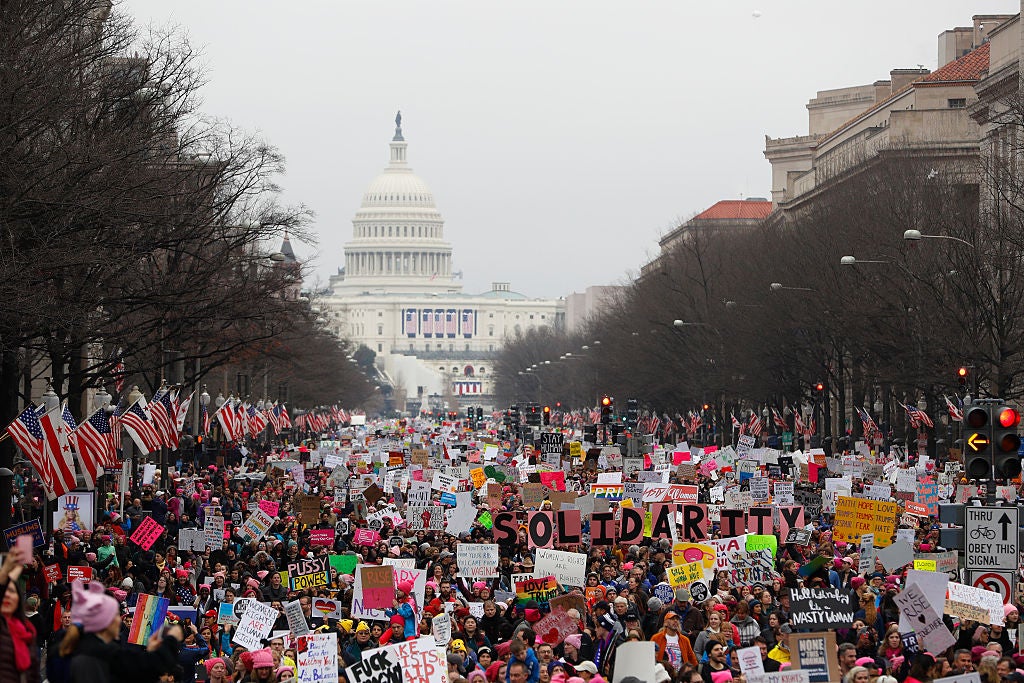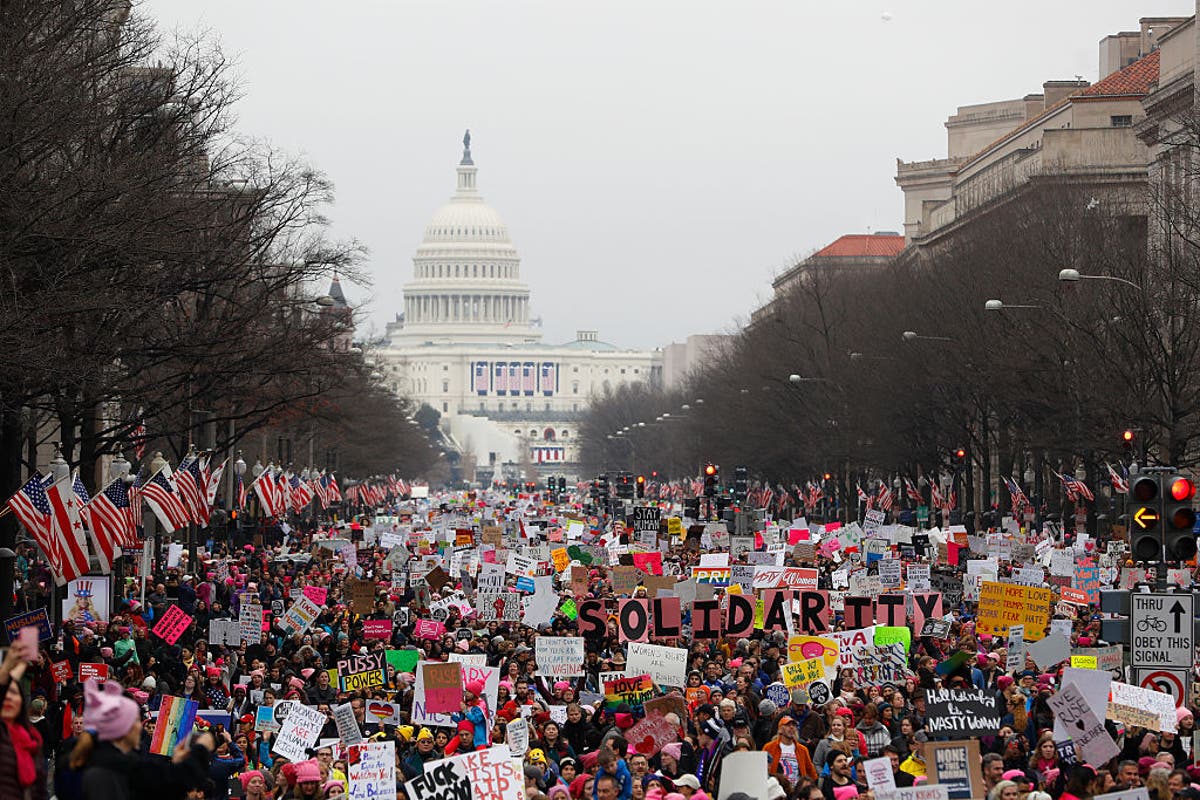It’s been 8 years since nearly half a million demonstrators descended on the National Mall in Washington, D.C., to protest Donald Trump’s presidency on his first full day in office.
The inaugural Women’s March at the time was the largest single-day protest in U.S. history. Many sported pink knit “pussyhats,” a reference to Trump’s own words in the 2005 Access Hollywood tape, in which he bragged about “grabbing [women] by the pussy.”
“We are the popular vote!” some chanted, a reminder that he hadn’t captured the hearts of the majority of Americans, having lost the popular vote to Hillary Clinton by nearly 3 million votes.
“Welcome to your first day, we will not go away!” other marchers promised.
Now that Trump is returning to the White House, so are the protestors. They want to show they have not gone away — even if their numbers are smaller.

This year’s People’s March, renamed to portray a multi-issue, multi-gender effort, is scheduled to be held on January 18 ahead of Trump’s second inauguration. Organizers predict 50,000 people will show — just 10 percent as many demonstrators as the first march.
That first march was “like lightning in a bottle — and it’s impossible to capture lightning in a bottle twice,” Tamika Middleton, managing director of Women’s March organization, told The Independent.
After Trump was first elected, many were driven to action by shock and anger — feelings that appear to have dissipated, if not changed completely.
Last November, Trump won the popular vote by more than 2 million votes — including earning the support of 45 percent of women. Not even his felony conviction, brags about “killing” Roe v. Wade and the allegations of more than two dozen women accusing him of sexual misconduct deterred voters from supporting him.
Vanessa Wruble, one of the Women’s March earliest organizers, said she doesn’t think there’s a demand for a march this time around.
“We’re just in a completely different place than we used to be,” she told The Independent. She didn’t want to discourage anyone from marching, but she warned: “I don’t think it will be effective.”
“[In 2017], I think that women were devastated that no matter how prepared, experienced, smart, better they were than a male candidate, that the men were still going to win,” Wruble said. His 2016 victory “seemed like an anomaly and a mistake and absolutely devastating.”
In 2025, Trump defeated yet another qualified woman: the sitting vice president, a former senator and a former district attorney.
Now that his victory is no longer an anomaly, “we can’t keep using the same playbook to try and fight,” Wruble argued.
Krista Suh, who didn’t have a hand in organizing the first march but created the pussyhat, also believes the status quo should be shaken up a bit.
She thinks the symbolic hand-knit caps that transformed the National Mall into a sea of pink don’t need to make a return this march. She supports those who want to wear it again, but she personally feels “it wouldn’t be right to rehash it.” She added: “I think what’s needed is something that’s unexpected.”
“The pussyhat was so great to put out that message that you’re not alone, and to create that emotional safety,” she continued. This time around, “we know we’re not alone now, but we’re just trying to find the most effective way to go up against this enemy,” she said, hesitating on the last word.
Eight years ago, it seemed like Trump was the so-called enemy, but now, “the enemy is not as clear cut,” she said.
The People’s March, organized by a coalition of groups, including Women’s March, Sierra Club and Planned Parenthood, is trying to combat that nebulous other.
The march isn’t driven by one specific issue, but hopes to build a “big tent” to address the incoming administration’s threats on abortion access, education, voting rights, climate, immigrants and the LGBTQ+ community, Middleton said.
“We recognize that if we are going to be able to beat back these threats, we have to be working together,” she said.
Suh praised the coalition’s work as important but warned: “A lot of people feel when they’re in a big tent that they’re not being heard.”
She thinks a march is still necessary, but may not work for everyone.
“We have to find sustainable ways to stay engaged,” she said. “Before, we could run on anger and fumes and emotion, and now it has to be a more sustained approach.”
The People’s March actually has the same goal in mind. It is just the beginning, not the end game, Middleton said. She added that “the end game for us is actually building a sustainable movement.”
Marches last just a few hours on one day, so the movement is trying to find ways to make that participation more enduring. The People’s March aims to help individuals connect with organizations advocating for issues they care about “so they can get plugged in and they can continue to be in the fight with us,” Middleton said.
Unlike the president-elect, she’s not fretting about the crowd size. She noted that the march’s “measure of success is not about how many people turn out, but rather about how many people we can move into organizations and keep them in the movement.”

